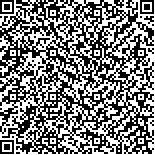付婧,余茜,肖军,易刚,黄林,徐丽.言语训练联合经颅磁刺激治疗外侧裂周失语的疗效及BOLD-fMRI表现[J].中华物理医学与康复杂志,2016,38(1):34-38
扫码阅读全文

|
| 言语训练联合经颅磁刺激治疗外侧裂周失语的疗效及BOLD-fMRI表现 |
|
| |
| DOI: |
| 中文关键词: 物理刺激 磁共振成像 失语 脑卒中 语言疗法 |
| 英文关键词: Transcranial magnetic stimulation Magnetic resonance imaging Aphasia Stroke Language therapy |
| 基金项目:四川省科技支撑项目(2014B064),四川省中医管理局支撑项目(2014JY0032) |
|
| 摘要点击次数: 3922 |
| 全文下载次数: 5536 |
| 中文摘要: |
| 目的应用血氧水平依赖性功能磁共振成像(BOLD-fMRI)技术,观察低频重复经颅磁刺激(rTMS)联合言语训练干预治疗脑卒中后恢复期外侧裂周失语症患者的疗效,探讨其最佳治疗方案。 方法纳入48例脑卒中后外侧裂周失语症患者,分为对照组和治疗组,每组24例。对照组采用言语康复训练治疗,治疗组患者采用rTMS联合言语康复训练,分别于治疗前、治疗2周末、治疗8周末三个时间点对患者进行BOLD-fMRI检查,观察大脑语言功能区激活范围的变化。2组均采用汉语失语成套检查(CRRCAE)评分评估治疗前、后的言语功能。 结果①治疗前,治疗组和对照组患者的CRRCAE得分分别为(40.7±10.2)分和(41.2±11.4)分,组间差异无统计学意义(P>0.05);治疗2周末,2组CRRCAE得分[(49.7±12.6)、(43.4±11.5)分]较组内治疗前有所提高(P>0.05),且组间差异亦无统计学意义(P>0.05);治疗8周末,2组CRRCAE评分[(70.6±12.2)、(52.7±12.5)分]较组内治疗前明显提高,差异有统计学意义(P<0.05),且治疗组的CRRCAE评分明显高于对照组同时间点(P<0.05)。②治疗2周末时,治疗组不同类型失语患者的CRRCAE得分均较组内治疗前有不同程度提高,且以Broca失语患者的改善最为明显(P<0.05),而Wernicke失语和传导性失语患者的改善相对较差(P>0.05);对照组不同类型失语患者的CRRCAE得分在治疗2周末差异不明显(P>0.05);治疗8周末时,治疗组不同类型失语患者的CRRCAE得分较组内治疗前均有提高(P<0.05),而对照组仅Broca失语患者的改善较组内治疗前有明显提高(P<0.05);2组患者治疗8周末时的组内不同类型失语患者间CRRCAE得分比较,以Broca失语患者的改善最为明显(P<0.05),且治疗组Broca失语患者的CRRCAE得分明显高于同时间点的对照组的Broca失语患者(P<0.05)。③治疗组患者在治疗2周末和治疗8周末,BOLD-fMRI显示右侧大脑半球激活区较同侧治疗前明显减小;治疗8周末时,亦较左侧半球同时间点明显减小(P<0.05)。 结论低频rTMS联合言语训练早期干预治疗可能会通过调节脑卒中后的语言功能重组,促进脑卒中后外侧裂周失语患者的恢复。 |
| 英文摘要: |
| Objective To use functional magnetic resonance imaging (BOLD-fMRI) to observe the efficacy of low-frequency repetitive transcranial magnetic stimulation (rTMS) combined with speech training in treating those with lateral fissure aphasia. Methods Forty-eight persons with lateral fissure aphasia were divided randomly into a control group and a treatment group, each of 24. The treatment group was treated with repetitive transcranial magnetic stimulation combined with speech training, while the control group was given only speech training. Before the treatment and 2 weeks and 8 weeks after the treatment, BOLD-fMRI images were collected to observe any changes in the language areas of the brain activated. A Chinese aphasia examination (CRRCAE) was used to assess speech function before and after treatment for both groups. ResultsThe average CRRCAE scores of the two groups were not significantly different right before the treatment and at the end of 2 weeks of treatment, but at the end of 8 weeks of treatment the average score of the treatment group was significantly better. The biggest improvement was among those with Broca′s aphasia, followed by those with Wernicke aphasia and conduction aphasia. No such differences were observed in the control group. After the 8 weeks of treatment, the average CRRCAE score of the treatment group patients had improved significantly, but in the control group only those with Broca′s aphasia had improved significantly. In the treatment group, after 2 weeks and 8 weeks of treatment the activated language areas of the right hemisphere were significantly smaller than before treatment and significantly smaller than the activated areas in the left hemisphere at the same time points. Conclusions Low-frequency, repetitive transcranial magnetic stimulation combined with speech therapy is an early intervention which may promote recovery from lateral fissure aphasia through restoring lingual function after stroke. |
|
查看全文
查看/发表评论 下载PDF阅读器 |
| 关闭 |